Do you plan to plant eucalyptus trees or plants in your garden or yard? Although eucalyptus offers attractive foliage and fragrant oils, their roots, especially eucalyptus roots, can become problematic when they spread excessively.
The root system of some eucalyptus species can be quite invasive, causing damage to pipes, sidewalks, and other nearby structures.
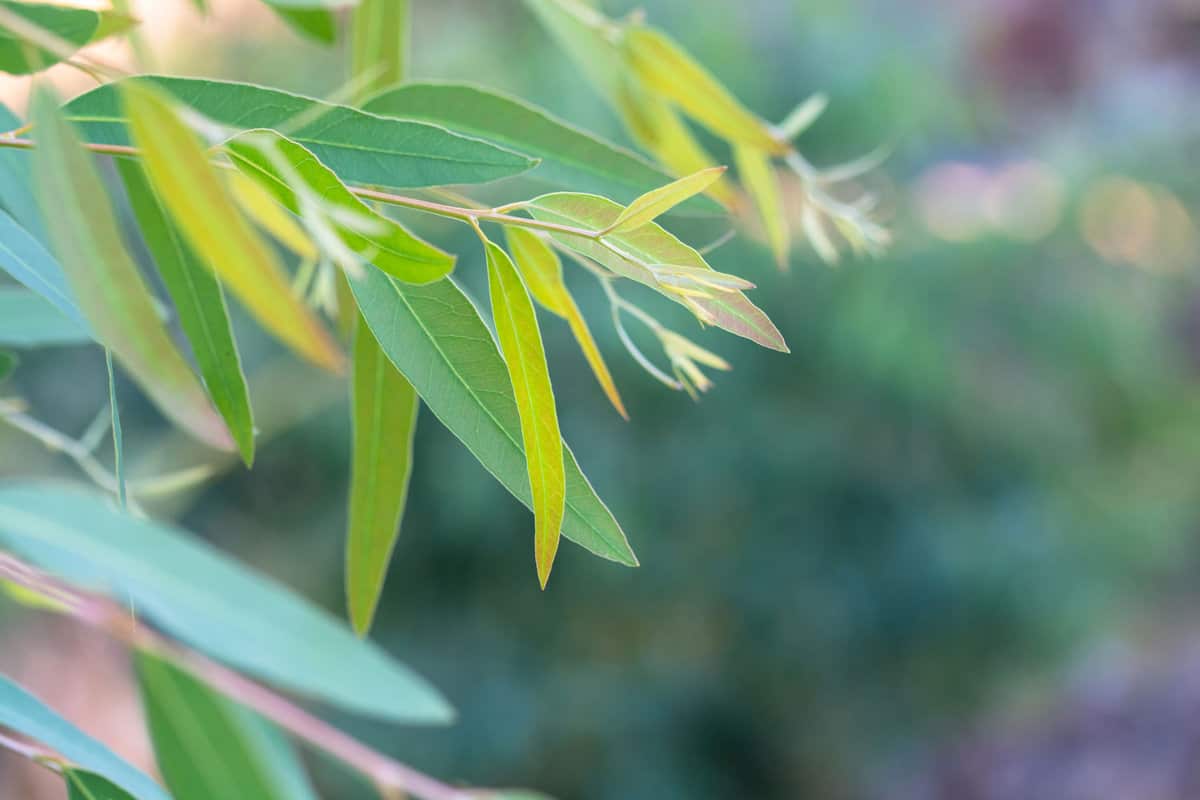
Eucalyptus trees are tall with shallow, spreading roots that are adapted to the harsh growing conditions in their native Australia.
While this may not pose an issue in their natural habitat, the shallow root depth of eucalyptus can become problematic in-home landscapes.
Are you considering planting eucalyptus in your yard, but unsure about their root system? In this article, we'll discuss eucalyptus roots, including their unique characteristics and how they can affect your property.
Keep reading to discover the truth about eucalyptus roots and how to keep your yard healthy.
Understanding Eucalyptus
Origins and Species of Eucalyptus
Eucalyptus, also known as Eucalyptus globulus Labill, is a genus of trees and shrubs that belong to the Myrtle family.
With over 700 species, eucalyptus is a native Australian plant that thrives in diverse habitats, from wet coastal forests to arid inland regions.
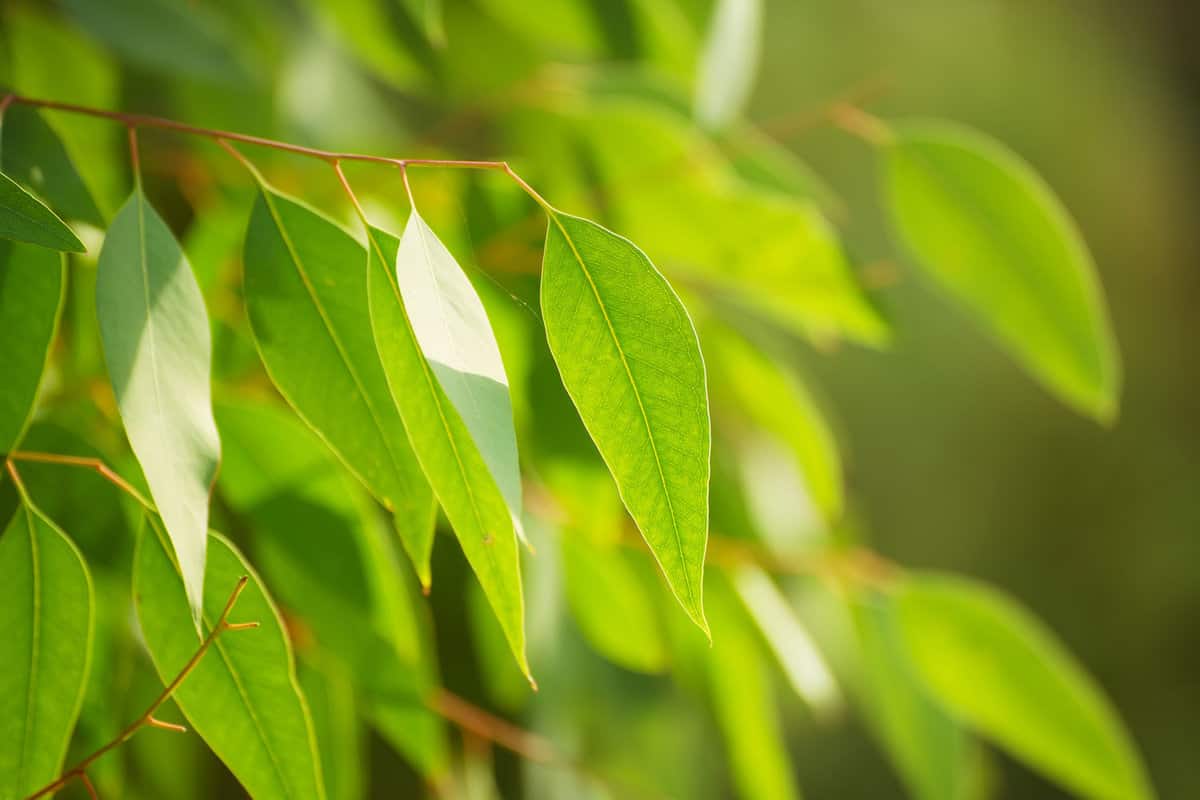
However, eucalyptus has been introduced to many other parts of the world, including North and South America, Europe, Africa, and Asia.
Characteristics of Eucalyptus
Eucalyptus is a fast-growing tree that can reach a height of up to 300 feet (crazy, right?). The tree has a distinctive appearance, with smooth bark that sheds in strips and usually long and narrow leaves.
The leaves of eucalyptus contain essential oils that give them a strong, pleasant fragrance. Eucalyptus is also known for its shallow root system, which can extend up to 100 feet outward from the tree.

While eucalyptus is valued for its many uses, such as timber, firewood, and essential oils, its invasive root system can also cause problems.
The shallow roots of eucalyptus can grow into ditches, plumbing pipes, and septic tanks, causing damage and clogging.
Therefore, it is important to plant eucalyptus trees at a safe distance from utilities, structures, driveways, sidewalks, and roadways.
Eucalyptus is a fascinating plant with many unique characteristics. While its shallow root system can be a challenge, proper planning and planting can help mitigate any potential issues.
The Root System of Eucalyptus
Root Structure
Eucalyptus trees have a unique root structure that is both invasive and shallow.
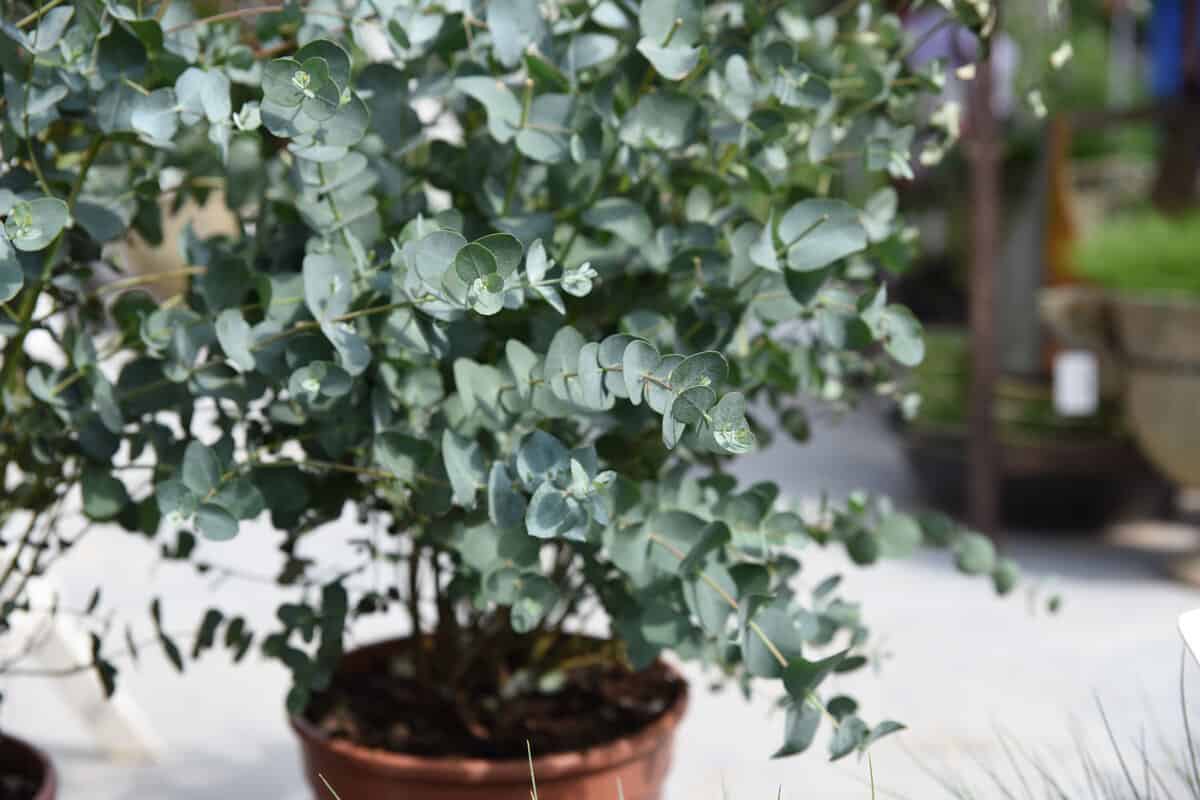
The roots can extend up to several feet underground and are typically thick and fibrous. This allows them to absorb water and nutrients efficiently.
Growth Pattern
Experts say that 90% of a cultivated eucalyptus's root system is found in the top 12 inches of soil.
This results in eucalyptus shallow root dangers and causes wind damage in eucalyptus, among other issues.
The invasive and shallow roots of eucalyptus can be detrimental to the plants and structures around it. Most eucalyptus tree problems occur when the ground is wet.
Related: What To Plant Under A Eucalyptus Tree [8 Great Ideas!]
Impacts on Native Ecosystems
Eucalyptus trees can outcompete native plant species for resources such as water and nutrients, leading to a loss of biodiversity.

The trees also release chemicals into the soil that can inhibit the growth of other plants.
In addition, eucalyptus trees can provide a habitat for non-native pests and diseases that can further harm native ecosystems.
Control and Management
Controlling and managing eucalyptus trees can be a challenging task.
One of the most effective ways to control the spread of eucalyptus trees is by removing them and replacing them with native plant species such as Coast Live Oak, Redwood, and Madrone.
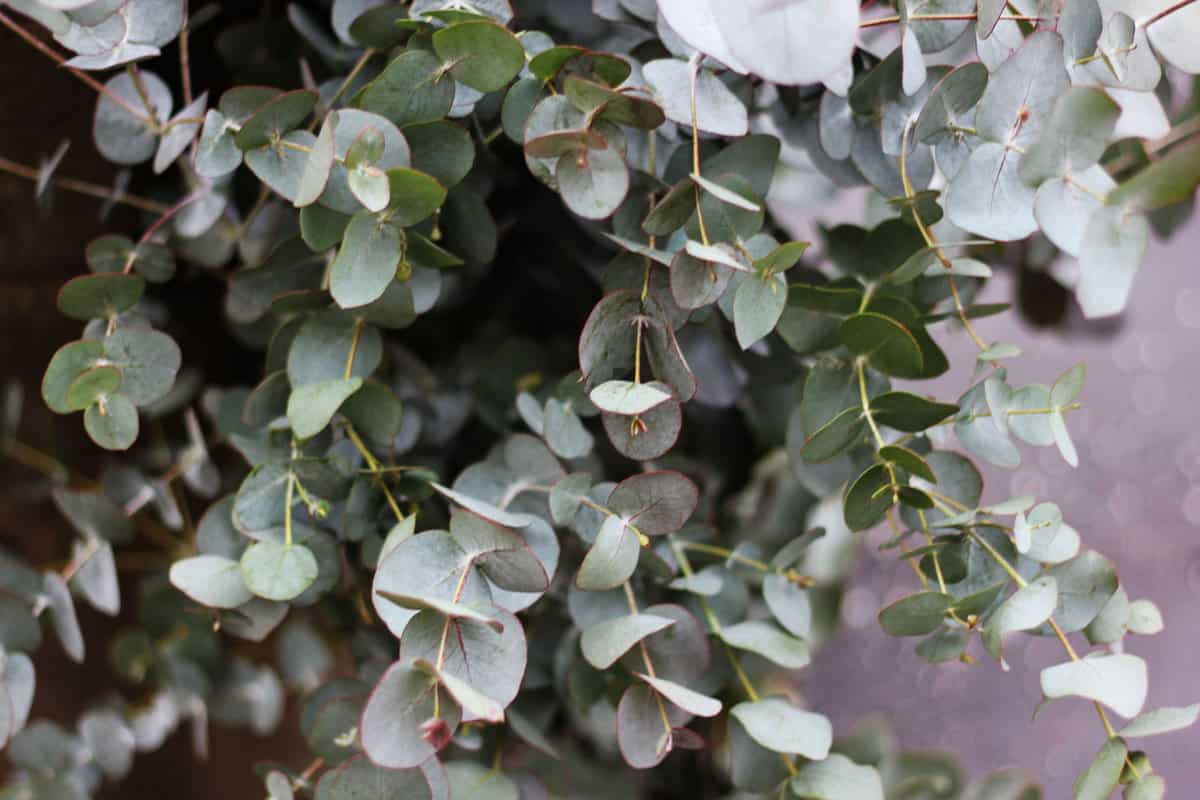
This process, however, can be expensive and time-consuming, especially when dealing with large areas of land.
Another method of control is through regular pruning of eucalyptus trees. This helps prevent them from producing seeds and spreading further, which can significantly reduce the risk of invasiveness.
It's important to note, however, that pruning can be a difficult and technical process, and should be done by a professional arborist or tree care expert.
In addition to these methods, it's crucial to be aware of the potential invasiveness of eucalyptus trees and take steps to prevent their spread.
This includes monitoring their growth and acting at the first signs of invasiveness, such as aggressive root growth or spreading beyond their intended area.
Best Places to Plant Eucalyptus
Planting Requirements
When considering planting eucalyptus, it's important to choose the right location. Eucalyptus trees need full sun to thrive, so it's best to plant them in an area with plenty of sunlight.

Eucalyptus trees prefer well-draining soil, so ensure that the soil in your chosen spot is not heavy or poorly drained. You can improve the soil quality by adding compost or organic matter.
Read more: Waste Into Wealth: 25 Reasons To Start Composting Now
Another important factor to consider when planting eucalyptus is its proximity to your home. Plant eucalyptus trees at least 30 feet away from your home to ensure safety and prevent damage.
Related: How Far Should A Tree Be From A House?
Considerations
Eucalyptus trees thrive in warm climates and prefer areas with mild winters and hot summers. They can tolerate a range of temperatures, but ensure that your location can provide the necessary climate requirements.
Additionally, eucalyptus trees prefer well-draining soil and do not do well in heavy clay soils or consistently wet soils.
They require full sun to grow well, although they can tolerate some shade.
Lastly, eucalyptus trees prefer areas with good air circulation and protection from strong winds.
Advantages and Disadvantages of Planting Eucalyptus
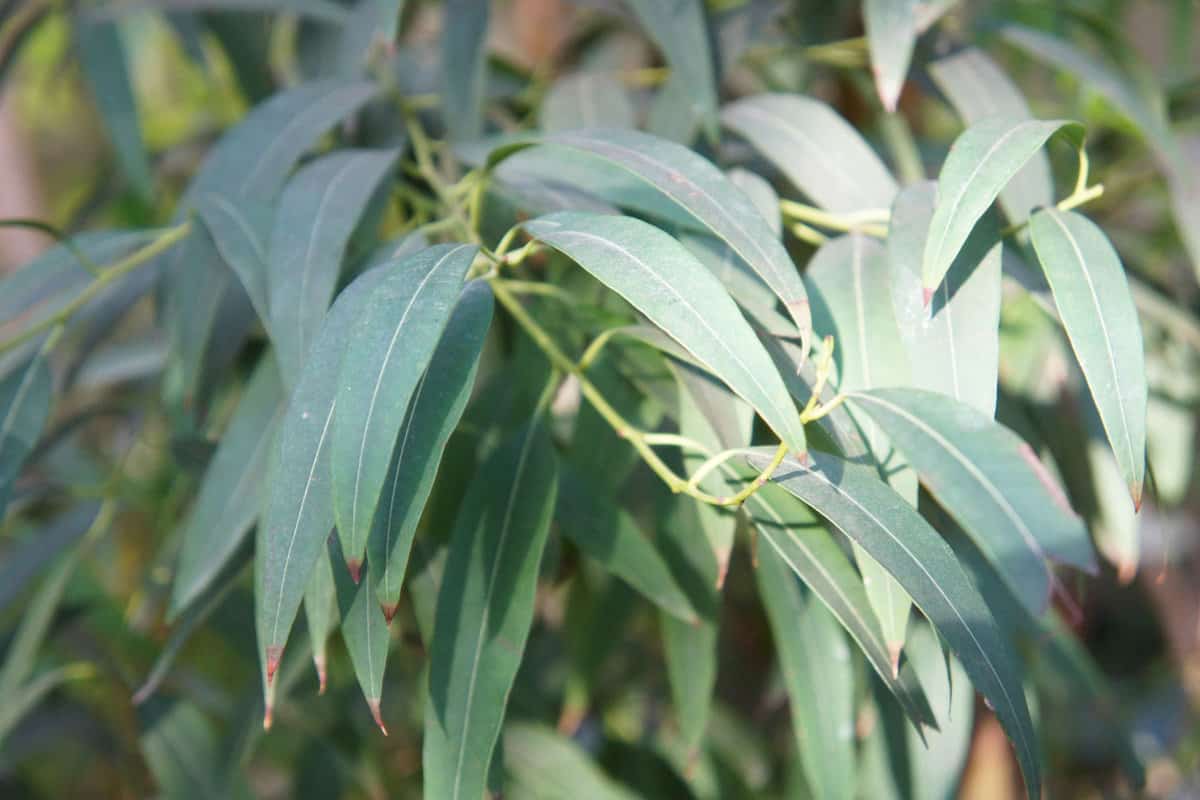
If you're considering planting eucalyptus, there are both advantages and disadvantages to keep in mind. Here's what you need to know.
Advantages
- Eucalyptus trees are fast-growing and can provide shade and privacy relatively quickly.
- The leaves of the eucalyptus plant can be used for medicinal purposes and as a natural insect repellent.
- Eucalyptus plants can also be used as a filler in cut flower arrangements.
- Eucalyptus trees have a pleasant fragrance that can freshen up the air in your garden or backyard.
Disadvantages
- Eucalyptus trees have invasive and shallow root systems that can cause damage to your property, including plumbing pipes and septic tanks.
- Eucalyptus trees have a reputation for being extensive water users and can contribute to soil depletion.
- The fast growth rate of the eucalyptus tree can also make it more susceptible to wind damage.
- Eucalyptus trees can be expensive to maintain, as they require regular pruning and may attract pests and diseases.
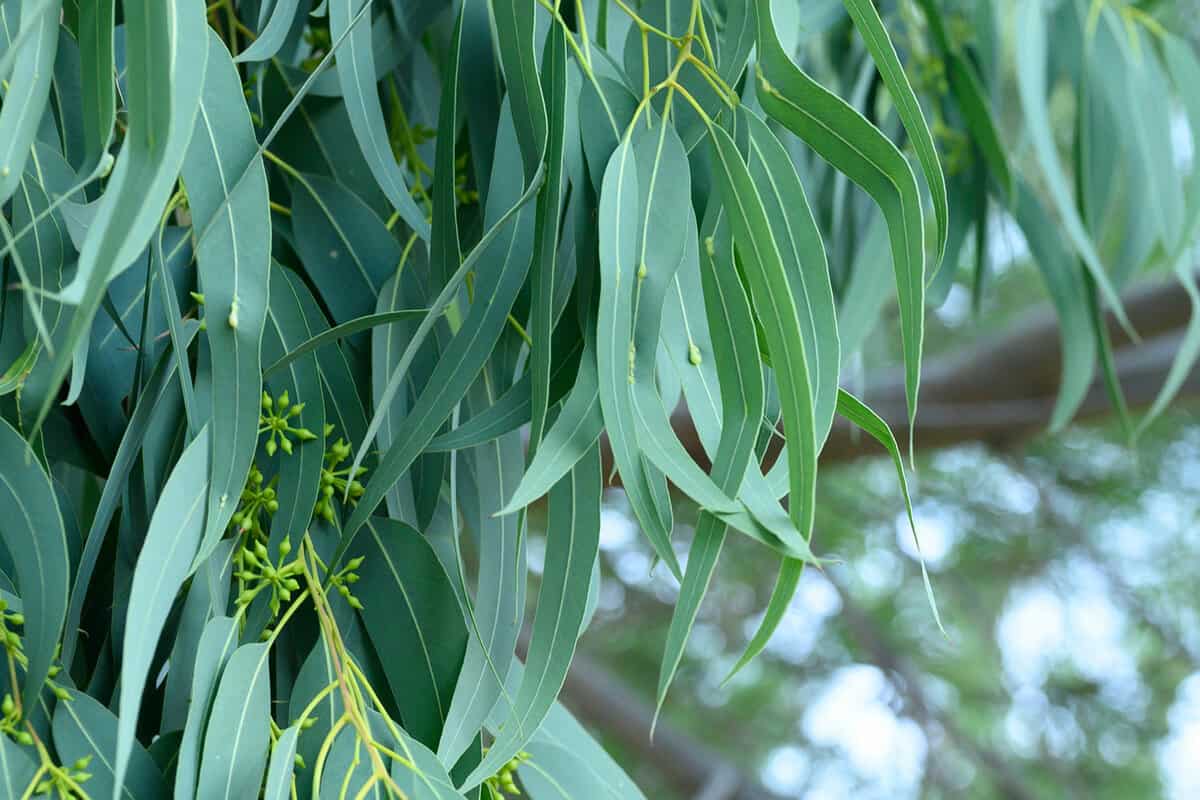
Rooting It All Together
Eucalyptus trees are known for their fast growth and adaptability to various soil types. However, some species of eucalyptus are considered invasive due to their aggressive root systems.
When planting eucalyptus trees, it is important to consider the potential impact on surrounding plants and structures. Eucalyptus trees should be planted away from buildings, sidewalks, and other structures to prevent damage from their invasive roots.
While eucalyptus trees have many benefits, it is important to consider their potential impact on the surrounding environment before planting.
If you do decide to plant eucalyptus trees, monitor their growth, and root system regularly. This will make sure you can enjoy the beauty and benefits of eucalyptus trees without causing harm to the surroundings.
